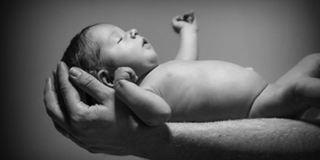Kenya joins new global alliance to end HIV/Aids in children by 2030

Kenya is among the 12 countries that have joined a new global alliance in a bid to end HIV/Aids in children by 2030.
The Joint United Nations Programme on HIV/Aids (UNAIDS), the United Nations Children's Fund (UNICEF) and the World Health Organization (WHO) have brought together a new alliance to fix one of the most glaring disparities in the AIDS response.
The alliance will run for the next eight years until 2030 and members are united in the assessment that the challenge is surmountable through partnership.
According to a report by the Centre for Strategic and International Studies, the Covid-19 pandemic slowed down progress in providing urgent help to children living with HIV in Kenya.
In 2019, an estimated 1.4 million Kenyans were living with HIV, 90,000 of whom were children under the age of 14. According to Kenya Health Information System, the number dropped to 78,465 in 2021.
However, the country has made steady progress in reducing the number of new HIV infections among children, from 23,000 in 2010 to just 5,500 in 2019. In 2021 it dropped marginally to 5,201.
Without accessing child-friendly antiretroviral drugs, many children living with HIV will die before their fifth birthday. In 2019, an estimated 3,100 children died from HIV in Kenya before dropping further to 3,092 in 2021.
However, Kenya has made good progress in this area, with an estimated 84 per cent of children living with HIV on Antiretroviral drugs in 2020. However, the number of children on antiretroviral dropped significantly to 68,588.
Critical care for children living with HIV was badly disrupted at the height of the pandemic as most HIV clinics in many parts of the country were converted into Covid-19 treatment units while HIV diagnostic platforms were used to process Covid-19 tests.
Data from UNICEF indicate that the percentage of women in Kenya who attended antenatal care appointments who were either tested for HIV or already knew they were HIV positive during the pandemic dropped from 89.5 per cent in 2019 to 84.6 per cent in 2020.
The alliance in the first phase will also include other countries like Angola, Cameroon, Côte d'Ivoire, the Democratic Republic of the Congo (DRC), Mozambique, Nigeria, South Africa, Uganda, the United Republic of Tanzania, Zambia, and Zimbabwe.
Globally, only half about 52 per cent of children living with HIV/Aids are on life-saving treatment.
Interestingly, according to the data released in the UNAIDS Global AIDS Update 2022, 76 per cent of adults are receiving antiretroviral.
Concerned by the stalling of progress for children, and the widening gap between children and adults, UNAIDS, UNICEF, WHO and partners have brought together a global alliance to ensure that no child living with HIV is denied treatment by the end of the decade and to prevent new infant HIV infections.
In addition to the United Nations agencies, the alliance includes civil society movements, including the Global Network of People living with HIV, national governments in the most affected countries, and international partners, including PEPFAR and the Global Fund.
Consultations by the alliance have identified four pillars for collective action and include closing the treatment gap for pregnant and breastfeeding adolescent girls and women living with HIV and optimizing continuity of treatment.
The other pillar is preventing and detecting new HIV infections among pregnant and breastfeeding adolescent girls and women, accessible testing, optimized treatment, and comprehensive care for infants, children, and adolescents exposed to and living with HIV.
The last pillar will address rights, gender equality, and the social and structural barriers that hinder access to services.
"The wide gap in treatment coverage between children and adults is an outrage," said UNAIDS Executive Director Winnie Byanyima.
"Through this alliance, we will channel that outrage into action. By bringing together new improved medicines, new political commitment, and the determined activism of communities, we can be the generation who ends AIDS in children. We can win this – but we can only win together."
"Despite progress to reduce vertical transmission, increase testing and treatment, and expand access to information, children around the world are still far less likely than adults to have access to HIV prevention, care, and treatment services," said UNICEF Executive Director Catherine Russell.
"The launch of the Global Alliance to End AIDS in Children is an important step forward – and UNICEF is committed to working alongside all of our partners to achieve an AIDS-free future."
"No child should be born with or grow up with HIV, and no child with HIV should go without treatment," said Dr Tedros Adhanom Ghebreyesus, WHO Director-General.
"The fact that only half of the children with HIV receive antiretrovirals is a scandal and a stain on our collective conscience. The Global Alliance to End AIDS in Children is an opportunity to renew our commitment to children and their families to unite, to speak and to act with purpose and in solidarity with all mothers, children and adolescents."





